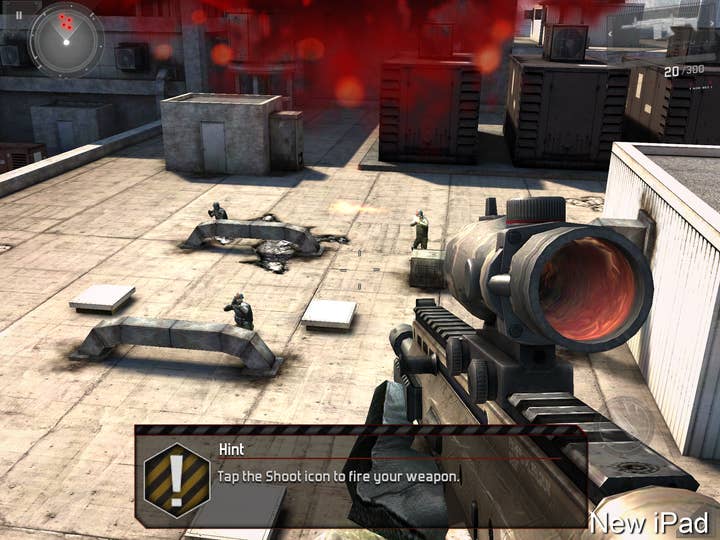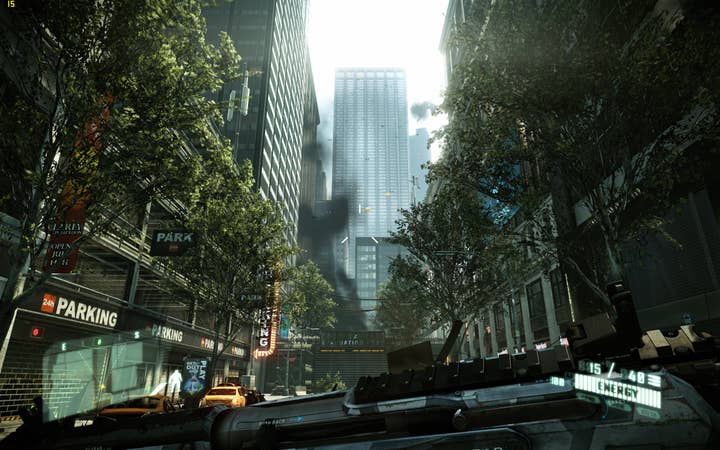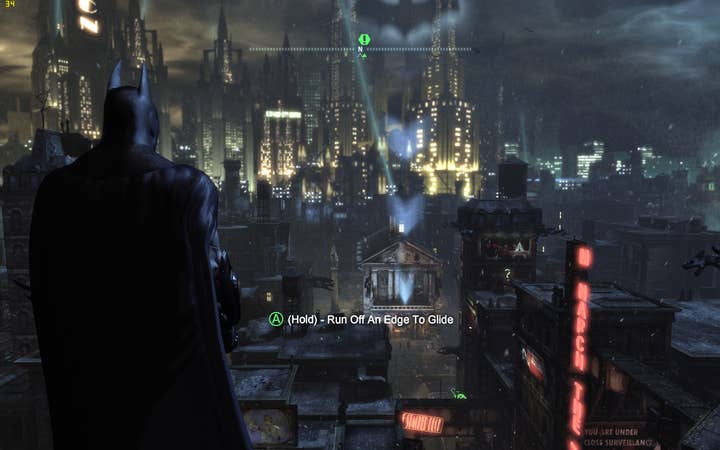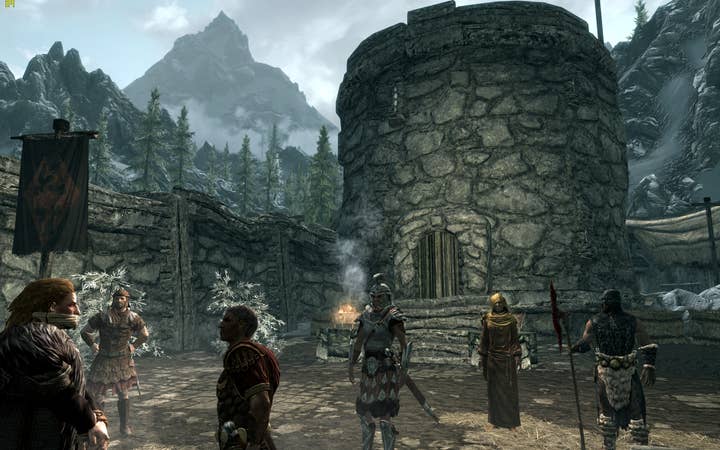Tech Focus: Extreme Resolution Gameplay
Digital Foundry on the arrival of Retina screens and next-gen 4K HDTVs - is the graphics power there to run cutting-edge gameplay on these phenomenal displays?
The latest rumblings from the increasingly more accurate Apple rumour mill are suggesting that we'll shortly be witnessing the arrival of a brand new, Retina display driven, 13.3-inch Macbook Pro. Where the Cupertino superpower leads, others inevitably follow - but where does this leave games development? Is the graphics hardware out there that can provide AAA gameplay experiences to match display resolutions that dwarf the living room standard 1080p?
"Apple set the pace for display quality and precision in the mobile and tablet markets, but the danger is that there simply isn't enough GPU power to support these extreme resolutions."
To begin with, let's assess the impact that Apple's move towards ultra-resolution displays has had on the market. The introduction of the Retina-equipped iPad at the same price as its predecessor poses some interesting questions, not just for competitors in the tablet space, but for laptop manufacturers too. The bog standard 1366x768 displays found in most entry and mid-level notebooks look positively hideous in comparison to the iPad screen, and while those PCs will comprehensively best the Apple tablet in terms of processing power, the functionality, portability and beautiful display gives consumers pause when it comes to assessing their next £400 tech purchase. The screen is the primary interface in a mobile device and it's surely only a matter of time before display upgrades will become the norm across the market.
Apple's demand for excellence in its screens is causing ripples already. Just the expectation that Apple would upgrade the Macbook Air was enough for Asus to pack its own Zenbook ultrabook platforms with pristine quality 1080p displays, even though the Retina upgrade has still yet to actually occur. Without Apple's drive towards higher quality displays, it's unlikely that this would have ever happened.
In the tablet space, Apple's influence has been even more remarkable - lower-quality TN displays are the preserve of cheapo Chinese tablets only, while superior IPS display tech is effectively the standard on devices from all major manufacturers. While Retina resolutions are still the preserve of Apple (mostly due to manufacturing shortages) already we see the arrival of 1080p screens - in Microsoft's Surface Pro tablet and the Acer Iconia Tab A700, for instance.
But the move towards extreme resolution gaming may not be limited simply to mobile devices, it's going to be a factor for PC and next-gen console too. We've already reached the point in the PC space where economies of scale have conspired to make 1080p the standard resolution even for entry-level displays. Current-gen consoles target 720p for native resolution - yet often still fall short - but we should reasonably expect 1080p to be the target for the next-gen boxes, as we've now reached the point where "full HD" displays are now more widespread than their lower resolution "HD Ready" equivalents. But the circa-2m pixels found in a 1080p display is nothing compared with what is to come.




Sony looks set to bless us with yet another new initiative designed to make us want to our upgrade our TVs. With stereoscopic 3D having failed to gain traction, we now hear rumours that PlayStation 4 will offer the ability to run games at 4K resolution - that's an astonishing 3840x2160, or 8.2m pixels - on its upcoming range of ultra-resolution displays.
"The Retina Macbook Pro is simply the most beautiful laptop I've ever used, but the mixture of a next-gen display with a mid-level GPU makes 3D gaming applications somewhat limited."
All of which leaves game-makers facing a very difficult challenge. While the pixel densities of game displays are increasing rapidly, the graphics hardware within these units isn't keeping pace. The Retina iPad features a 4x pixel boost over its predecessor, but only a 2x GPU power increase to service it. Looking at the new Retina Macbook Pro, it features the exact same graphics core as the non-Retina model, just with an extra 512MB of GDDR5 RAM attached. Looking ahead to the PlayStation 4, we should realistically be expecting a 6x to 8x performance boost - yet 4K resolution represents a 9x increase in pixel density over current-gen 720p. To be brutally frank, we're looking for more from next-gen visuals than a simple increase in resolution, indeed NVIDIA's Timothy Lottes has already made a convincing argument that these graphical resources should be deployed elsewhere.
Solutions to this issue have been somewhat thin on the ground. Of all the devices moving towards ultra-resolution gaming, it's the iPad that has managed to cope best. Game-makers seek to craft their games for as large a range of iOS devices as possible, and they're often 2D in nature - this combination ensures that a majority of apps can run at Retina resolution with no problem at all. But on demanding 3D titles, there can be issues. Epic released a "Retina" upgrade to Infinity Blade 2, but it doesn't run at the native resolution of the latest iPad, instead scaling pixel throughput to 2x that of the iPad 2 - matching the boost in rendering capabilities, but not the display. Other games run at sub-native resolutions, or introduce resolution sliders like Riptide GP, effectively allowing users to choose between frame-rate or pixel depth. Some games simply ignore the GPU deficit with poor results: Modern Combat 3 from GameLoft runs at Retina resolution but features much lower frame-rates than the same game running on iPad 2. NOVA 3 is even worse, cutting out a lot of the excellent effects work that you'll only see by running the game on the older (!) iPad 2.
We see the same issues with the Retina Macbook Pro. Less demanding 2D titles run beautifully, and look simply wonderful on what is by far and away the most beautiful display I've ever used on a laptop, but 3D games are a mixed bag. Older games with lower GPU requirements still have trouble running at smooth frame-rates at the 2880x1800 Retina resolution, and the near-perfect screen showcases the shortcomings of the original artwork with brutal clarity. Games like Battlefield 3 and Crysis 2 simply don't have the horsepower to run at native resolution at all without often dropping into single digit frame-rates.
However, there are some pleasant surprises. Drop back to medium quality settings and the RMBP can run both Batman: Arkham City and Skyrim fairly well, with frame-rates in the region of 30FPS. Diablo 3 is a bit of a wash-out but StarCraft 2 seems to run perfectly adequately in the campaign levels I tested. These games all have something in common - a rich amount of detail in the visuals, brought out beautifully by the Retina display. However, these are using far from the highest quality settings so what we're seeing is essentially a trade-off in effects work in favour of resolution.




What we are seeing with Apple's Retina devices is a quantum leap in one area of hardware design that's waiting for the rest of the hardware to catch up - something that is perhaps to be expected bearing in mind that these are first generation products. In the case of the iPad, we already know the roadmap here: the arrival of PowerVR Rogue graphics tech next year will see a jump in mobile GPU performance that should in theory eclipse that of the jump in pixel depth Retina represents. Things are less clear with the laptops - more powerful GPUs will require thermal headroom that simply isn't available in current notebook form-factors, especially Apple's, which are exceptionally thin already. The Retina Macbook Pro already features a 28nm graphics core - and further shrinks in the fabrication technology are likely to be years away.
"It's difficult to imagine that PS4's 4K support will be any different from 1080p gaming on PS3: rarely deployed, with developers more likely to target mainstream full HD displays."
On the plus side at least, it's difficult to imagine that pixel density will be increasing much beyond Retina level in the next few years. It's just a case of waiting for the GPU technology to catch up as it inevitably will. On top of this, once there are established standards for ultra-resolution displays, then it's more likely that developers will target them specifically, just as they have done for 720p and 1080p.
With regards Sony and the rumours of 4K support, it's difficult to avoid a general feeling of déjà vu - PlayStation 3 launched in 2006 with great fanfare amid claims for support for the emerging 1080p standard. Launch titles like Ridge Racer 7 showed some promise, but true native 1080p titles proved to be somewhat thin on the ground - and even showcase titles like GT5 took short-cuts by running at sub-native resolution: 1280x1080 in the case of the Polyphony classic. I can't help but feel that 4K will go the same way - why target a display that only a tiny minority will have? Why expend GPU resources on pixel fill-rate when higher levels of detail and more lavish effects are possible at a lower resolution?
That said, we know that Sony is experimenting with 4K gameplay. Polyphony Digital has a 4K Gran Turismo 5 demo working by networking four PS3s together, each rendering a quarter-screen of the action. The surprise results of the Retina Macbook Pro on titles like StarCraft 2, Skyrim and Batman: Arkham City, suggest that even a relatively modest graphics core can produce worthwhile results at extreme resolutions. The power boost we'll find in the PlayStation 4 GPU in combination with the sheer will of Sony in promoting its new displays could produce some interesting results. That said, most developers will almost certainly target the most popular displays, and true 1080p looks like the natural choice for both PlayStation 4 and Microsoft's Durango: a good fit generally for the 6x to 8x performance increase we can expect from current-gen consoles with their 720p target resolution...

